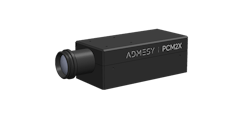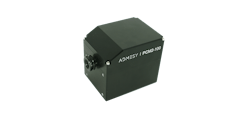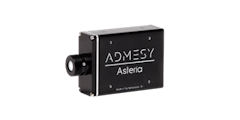
스펙트럼 데이터
제품 개발 또는 생산라인에 이르는 광범위한 응용 분야는 빛 또는 빛 반사에 대한 매우 정확한 분석이 필요합니다. 휘도계 또는 색차계를 통한 분석만으로는 디스플레이 샘플에 대한 모든 필요한 정보를 얻을 수 없습니다. 하지만 분광법 또는 분광분석법를 사용하면 개별 파장에 따른 광의 구성 성분에 대한 자세한 데이터를 얻을 수 있습니다.
프리즘이나 격자회절을 통해 광선을 분산시켜 개별 파장에 따른 에너지의 양을 측정할 수 있습니다. 스펙트럼 정보는 분광 분포, 불필요한 파장의 존재 여부, 광원의 연색성 또는 재료의 투과 transmissive 또는 반사 reflective 특성을 분석하는 데 사용됩니다.
이것은 일반적인 분광법입니다. 분광법은 광선을 개별 파장으로 분산시켜 빛을 분석하는 데 초점을 맞춘 학문이라고 할 수 있습니다. 이 분석은 일반적으로 빛의 구성 성분을 분석할 수 있는 계측기인 분광기로 수행됩니다.
회절격자를 통해 들어오는 빛을 개별 파장으로 분산시켜 각 파장의 비율을 측정할 수 있습니다. Admesy는 인간의 눈으로 볼 수 있는 가시 범위[VIS] 외에도 자외선[UV]에서 근적외선[NIR]까지 측정하는 제품도 생산합니다. 아래 그림은 다양한 파장의 개요를 보여줍니다.
빛의 정량적 평가는 스펙트럼 측정의 한 사례입니다. 분광기에 의한 광 분석은 일반적으로 분광 분포를 나타내는 분광 그래프로 표현됩니다. 아래 그림은 보정된 분광기를 사용하여 여러 "백색" 광원의 분광 분포를 보여줍니다.
Admesy는 제품 개발 단계 또는 공정 제어(예: In-line 측정)에 대해서 각각의 특정 요구 사항을 충족하는 분광기를 생산합니다. 아래 표는 다양한 파라미터와 해당 측정 장치에 대한 개요입니다. 이 표는 디스플레이 및 조명의 측정뿐만 아니라 투과 및 반사 측정 transmission and reflection measurements, 분광분석 analytical applications에도 적용됩니다.
| Neo | Prometheus Spectrometer | |
|---|---|---|
| Analytical 분석 | yes | |
| 색 분석 | yes | yes |
| Dominant & Peak wavelength | yes | yes |
| Luminance & Illuminance 휘도 및 조도 | yes | Luminance |
| Luminous intensity 광도 | Cosine Corrector | |
| Luminous flux 광속 | Combined with sphere | |
| CCT | yes | yes |
| CRI | yes | |
| PAR | Cosine corrector | |
| 저휘도 | yes | yes |
How are you measuring?
With fibers and other accessories even more type of measurements are possible. Often used accessories are integrating spheres, cuvettes for fluids, light sources or filter holders.
A cosine corrector collects the light from the half space under 180 degrees. A typical application is the illuminance measurement of a lighting situation.
Consumers are used to enjoy top-quality displays in their mobile phones, tablets, laptops and even cars. Emerging technologies such as lighting surfaces for office and home illumination are expected to look equally perfect. Both displays and luminous surfaces are the main application areas for imaging colorimeters.
Measuring the luminance or color values at a specific location of the device under test is a typical use case when measuring displays. It can, however, also be meaningful to assess reflected light.
PCM2X-271

0.000 025 - 30 000 cd/m²
PCM2X-270

0.000 05 - 60 000 cd/m²
PCM2-100

0.0003 - 15 000 cd/m²
PCM2X-102

0.000 05 - 60 000 cd/m²
Viewfinder Spectrometer

Standard lens 1.2° spot ⌀ 4.56 mm ‑ 6.71 m
Viewfinder Spectrometer

Close up lens 0.75° spot ⌀ 0.96 ‑ 1.47 mm
Colorimeter 2.1 mm

0.001 - 30 000 cd/m² (190 000 cd/m² in UHL mode)
Colorimeter 5 mm

0.001 - 30 000 cd/m² (190 000 cd/m² in UHL mode)
Colorimeter 10 mm

0.001 - 30 000 cd/m² (190 000 cd/m² in UHL mode)
Colorimeter 10 mm wide-angle

0.0003 - 7 500 cd/m² (190 000 cd/m² in UHL mode)
Colorimeter 20 mm

0.0003 - 7 500 cd/m² (48 000 cd/m² in UHL mode)
Colorimeter 27 mm wide-angle

0.0001 - 2 800 cd/m² (20 000 cd/m² in UHL mode)
Spectrometer

VIS 380 - 780 nm
High-end Spectrometer

VIS 360 - 940 nm




